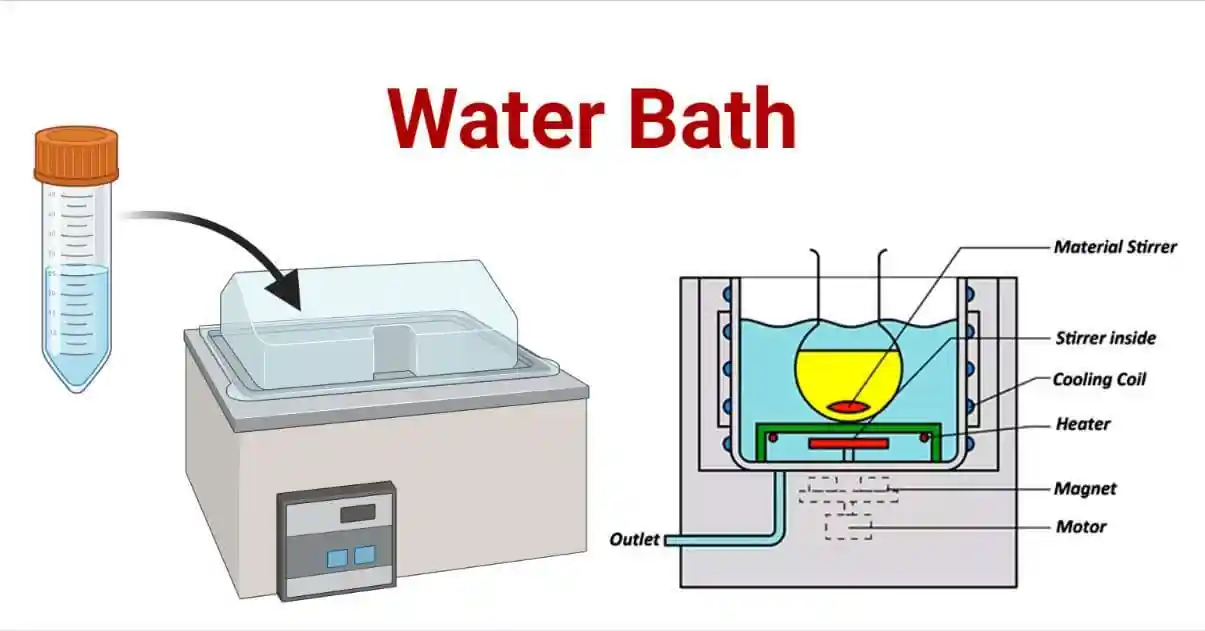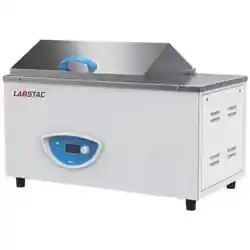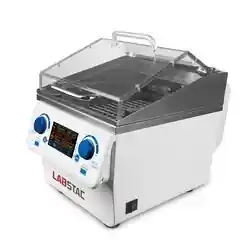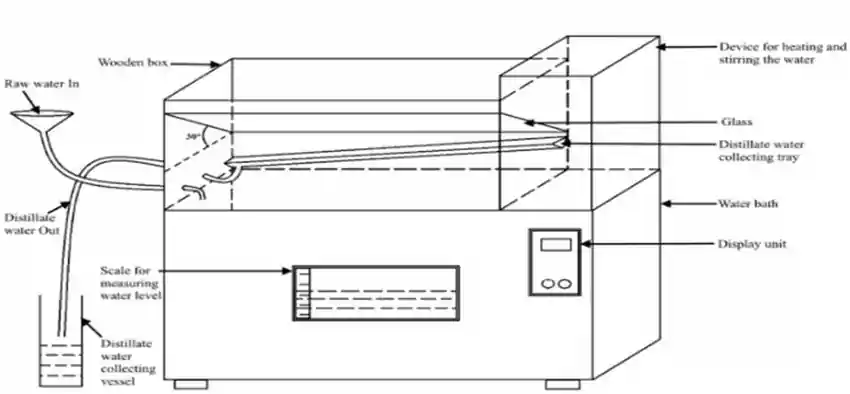Do’s and Don’ts while using a Water Bath

Water baths is an instrument that is used in a laboratory to heat samples in constant temperature for a long period of time. It consists of a thermostatically controlled container filled with water. Water bath uses include melting the substrate, warming reagents or incubation of cell culture.
Working Principle of Water Bath
Water bath consists of sensors. This sensor converts the temperature of the water into a resistance value which is amplified and compared by an integrated amplifier. This controls the signal, which leads to effective regulation of standard heating power of the electric heating tube and keeps the water at a constant temperature.
Components of water bath

components of water bath
Container
The container is made up of insulated metal like stainless steel. The samples are placed in the container over a long period of time.
The lid of the container includes insulated metal or heat resistant glasses. The lid helps to prevent evaporation when in use.
Heater
Heater is the main component of the water bath. The heater has temperature sensors that help to heat the water bath.
Thermometer
It helps gauge the water bath’s temperature.
It helps to maintain the constant temperature in a water bath.
Propeller or stirrer device
It is mostly present in the circulating water bath which helps in water circulation.
Outlet
The water is removed through an outlet from the container.
Indicator light
The indicator light is present in every type of water bath .The heating up of the instrument is indicated by the light.
Once the desired temperature is acquired the light gets off to maintain the temperature in the Water Bath.
Types of Water Bath
Shaking Water Bath
One type of water bath is a shaking water bath.A shaker platform present in the water bath. The shaker is used to provide agitation to the sample at a constant temperature. The shaking factor is controlled by an On and Off button.

Shaking-Water-Bath
Circulating Water Bath
circulating water bath
It is also known as a stirrer;link-start https://labstac.com/Water-Bath/p/BAC028-12">water bath.As the name concludes the water is circulating in the water bath. The circulation of water helps to maintain the desired temperature of the water. It helps quickly heating or cooling of samples or reagents across a wide temperature range. Enzymatic and serologic testing uses circulating water baths as it provides a more stable temperature.
Non circulating water bath

Non circulating water
These kinds of water baths depend on the traditional mechanism rather than heating the water uniformly. Therefore they are less accurate in temperature control when compared to the circulating and shaking water bath.
Calibration
First switch on the water bath and set the temperature to 50°C.
Once 50°C is obtained, check the temperature by a calibrated thermometer and check again after 10 minutes. Repeat the same procedure up to 100°C.
Keep the record of the calibration.
Calibration is to be done after every 6 months or when the instrument falls in calibration, call the authorized service engineer.
Acceptance Criteria: ±2°C
Example for calibration of water bath
| Calibration Point °C. | Observed reading | Standard Reading | Difference in°C |
| 30 | |||
| 50 | |||
| 65 | |||
| 80 | |||
| 100 |
Working or Operating procedure:

Operating
1. Check whether the instrument is clean and the temperature instrument is calibrated according to the due date.
2. Plug on the water bath.
3. Check the water in the water bath has enough depth for the heating element to be poured in.
4. Switch “ON” the instrument’s power source.
5. Press the “SET”key to set the desired temperature. Temperature can be changed by pressing other buttons.
6. Use a calibrated thermometer to confirm the temperature.
7. When a water bath is in use the thermometer sensor will retain the set temperature.
8. After the use of a water bath Switch Off the power button and unplug the instrument.
9. Once the use is finished completely dry the water bath and place the lid on it.
Application
A water bath is one of the essential instruments. Water bath is a multipurpose equipment.
• It is used for heating the reagents
• The water bath is used in order to heat the flammable compounds as it allows chemical processes in high temperatures.
• It enhances the solubility of the compounds.
• The flammable substances are heated in the water bath as they may ignite under open flame.
• Sample preparation can also be done in a water bath as they provide desired amount of heat.
• Incubation processes are also performed in the water bath as they provide a presided amount of heat.
• The microscopic techniques like acid fast staining and spore staining the heat process are done in a water bath. researchers use a water bath as the process requires constant temperature.
• To get accurate results of DNA hybridization and gel electrophoresis
• Helps in the isolation of Actinomycetes from the soil sample.
•Shaking water bath is used to mix two substances instead of a standard water bath.
• Determination of enzymes by end point method.
Care and Maintenance of Water Bath
As a water bath is an important equipment in the laboratory so it is essential to keep it in good condition.
The water bath should be kept clean and dry.
To avoid cross contamination always disinfect the instrument between the uses and always use sterile water while working with sensitive samples or cultures.
Always turn off the main switch when not in use.
Cover the water bath not in use with its lid.
See to it that the water bath is grounded properly and avoid the use of damaged plugs and keep the power source away from the water. evaporation can occur or even the equipment can also get damaged.
Check on the temperature as when temperature exceeds the limit the sample degradation
Do not use corrosive agents in the water bath.
Use compatible containers and ensure that they are sealed properly to avoid leakage into the water bath.
Advantages
The samples can be heated uniformly. There is no direct heating through flame which means the samples stay in good condition.
Water bath has a large surface area so the samples can be heated quickly.
You can heat various samples simultaneously. There is very little chance of temperature variations because water baths can hold a significant amount of heat.
AS they are very flexible so they are very essential equipment. They can be used for sample thawing
Precautions
Keep your hands dry while plugging or switching into the main power.
Fill the appropriate amount of water as the sample containing vessels will displace water increasing the volume of water.
Make sure that that lid is closed when in use to avoid evaporation and contaminations.
Instruments should be kept clean and dry. After the use to avoid contamination always disinfect the equipment between the uses.
The use of sterile water is preferred rather than tap water to avoid contamination. Tap water also contains ions that will increase corrosion.
Heating rod has to be fully immersed in the water bath so as to heat the water uniformly.
Drain out the water from the water bath when not in use as it may cause rusting.
Avoid anti-rusting solutions.
Always apply a thermometer to check whether the water bath is working correctly.
Conclusion
As per all given information above the water bath is an instrument that is used frequently in the laboratory. So one need to do pay proper attention while using the instrument. Always take proper precautions and also keep a check on the maintenance of the instruments. An accurate instruments my give good results.
You May Also Like








